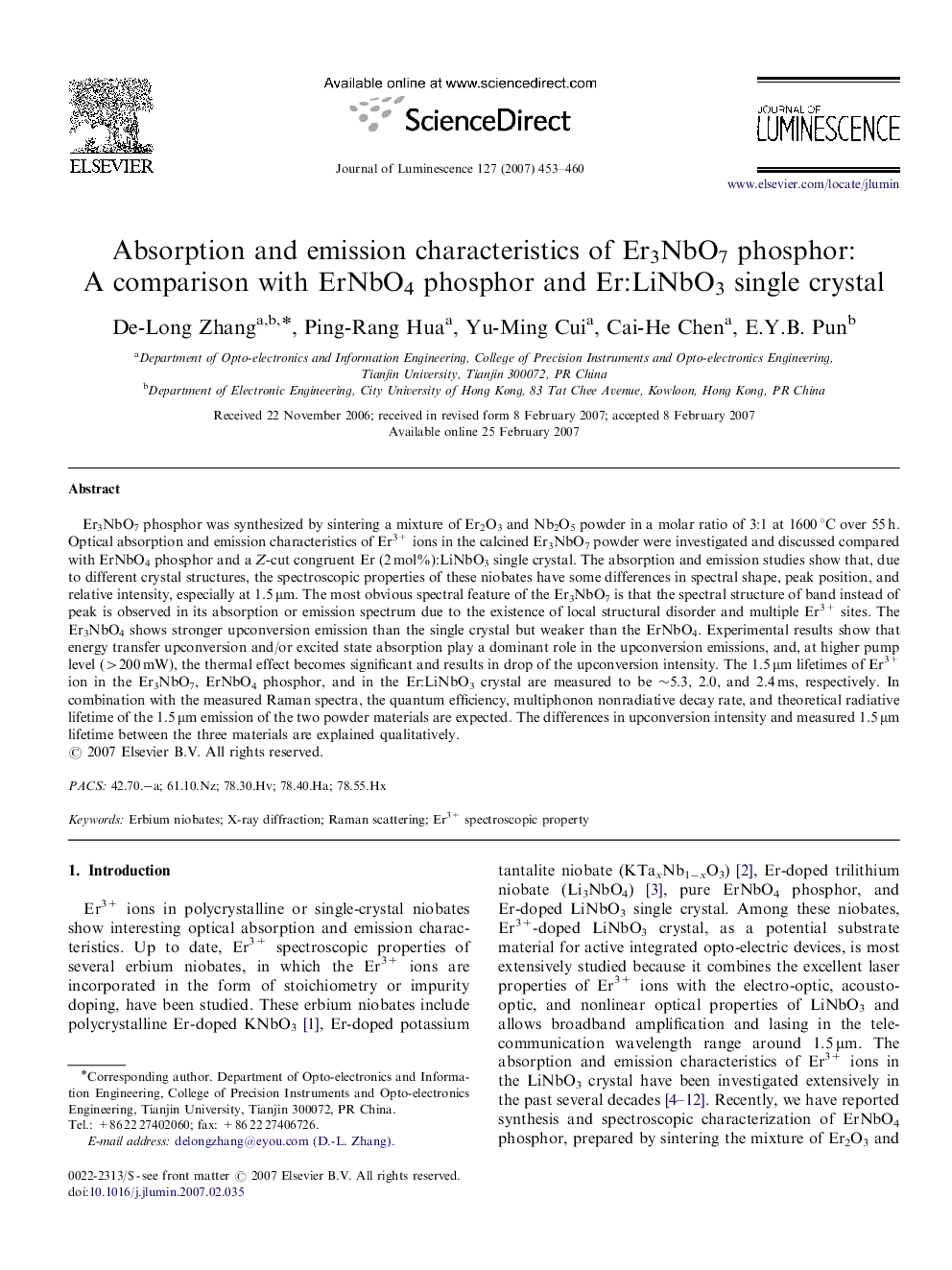| Article ID | Journal | Published Year | Pages | File Type |
|---|---|---|---|---|
| 5403168 | Journal of Luminescence | 2007 | 8 Pages |
Abstract
Er3NbO7 phosphor was synthesized by sintering a mixture of Er2O3 and Nb2O5 powder in a molar ratio of 3:1 at 1600 °C over 55 h. Optical absorption and emission characteristics of Er3+ ions in the calcined Er3NbO7 powder were investigated and discussed compared with ErNbO4 phosphor and a Z-cut congruent Er (2 mol%):LiNbO3 single crystal. The absorption and emission studies show that, due to different crystal structures, the spectroscopic properties of these niobates have some differences in spectral shape, peak position, and relative intensity, especially at 1.5 μm. The most obvious spectral feature of the Er3NbO7 is that the spectral structure of band instead of peak is observed in its absorption or emission spectrum due to the existence of local structural disorder and multiple Er3+ sites. The Er3NbO4 shows stronger upconversion emission than the single crystal but weaker than the ErNbO4. Experimental results show that energy transfer upconversion and/or excited state absorption play a dominant role in the upconversion emissions, and, at higher pump level (>200 mW), the thermal effect becomes significant and results in drop of the upconversion intensity. The 1.5 μm lifetimes of Er3+ ion in the Er3NbO7, ErNbO4 phosphor, and in the Er:LiNbO3 crystal are measured to be â¼5.3, 2.0, and 2.4 ms, respectively. In combination with the measured Raman spectra, the quantum efficiency, multiphonon nonradiative decay rate, and theoretical radiative lifetime of the 1.5 μm emission of the two powder materials are expected. The differences in upconversion intensity and measured 1.5 μm lifetime between the three materials are explained qualitatively.
Related Topics
Physical Sciences and Engineering
Chemistry
Physical and Theoretical Chemistry
Authors
De-Long Zhang, Ping-Rang Hua, Yu-Ming Cui, Cai-He Chen, E.Y.B. Pun,
